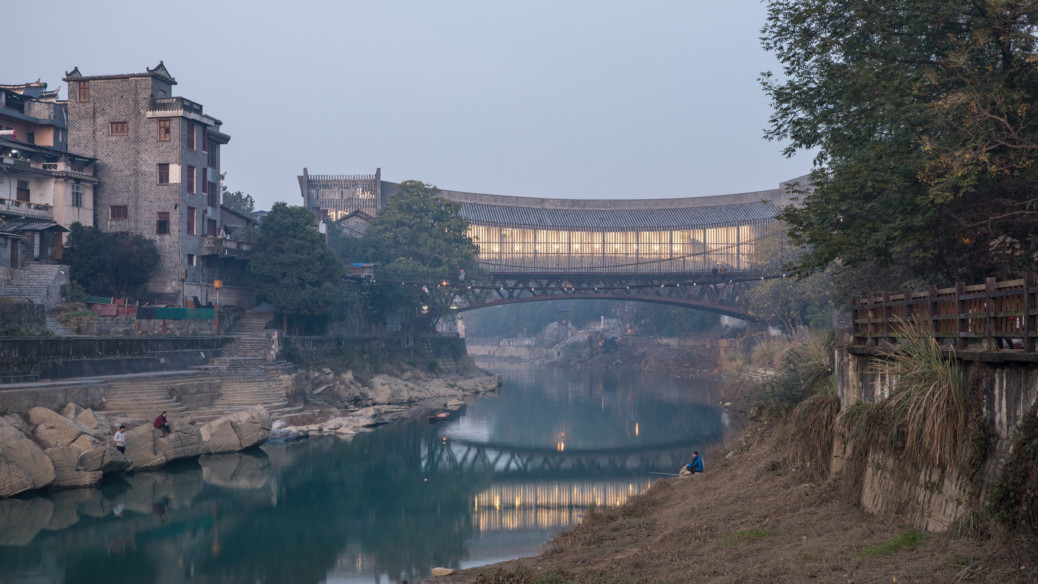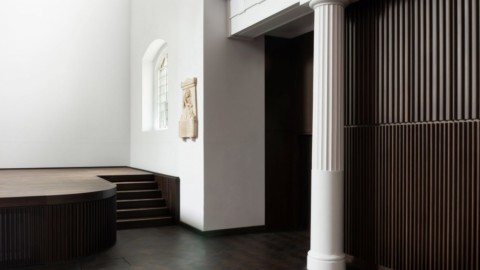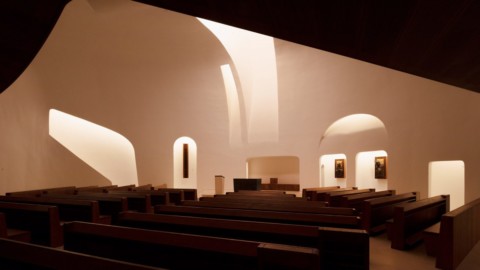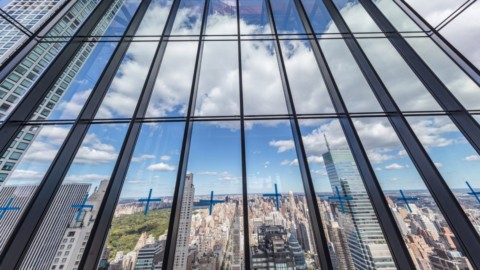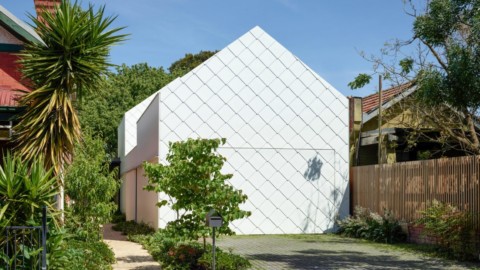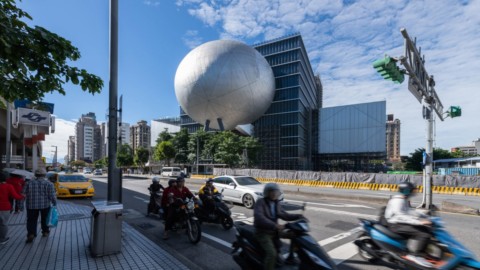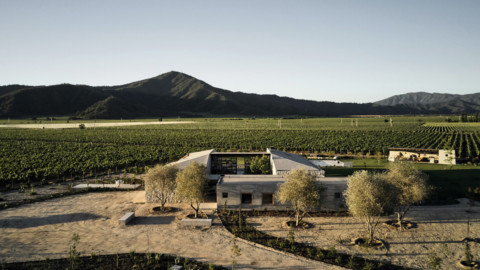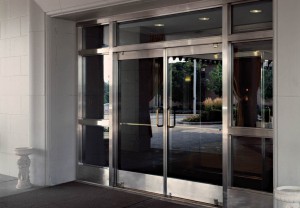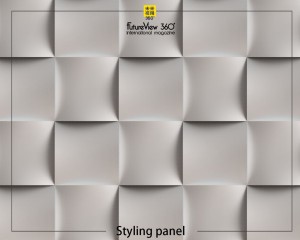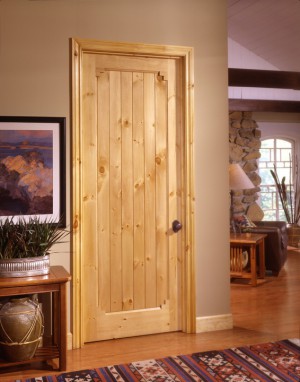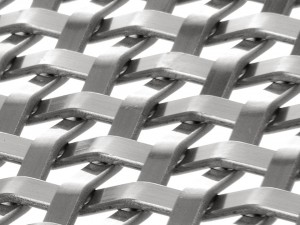Chinese firm Atelier FCJZ has completed an art gallery that bridges a river in the city of Jishou, to encourage people to engage with art on their daily commute.
The Jishou Art Museum (JAM) traverses the Wanrong river, which runs through the old town of Jishou, China.
中國公司Atelier FCJZ已建成一座藝術館,在吉首市的一條河上架起一座橋樑,以鼓勵人們在上下班途中與藝術互動。
吉首美術館(JAM)橫穿萬榮河,該河橫穿中國吉首古鎮。
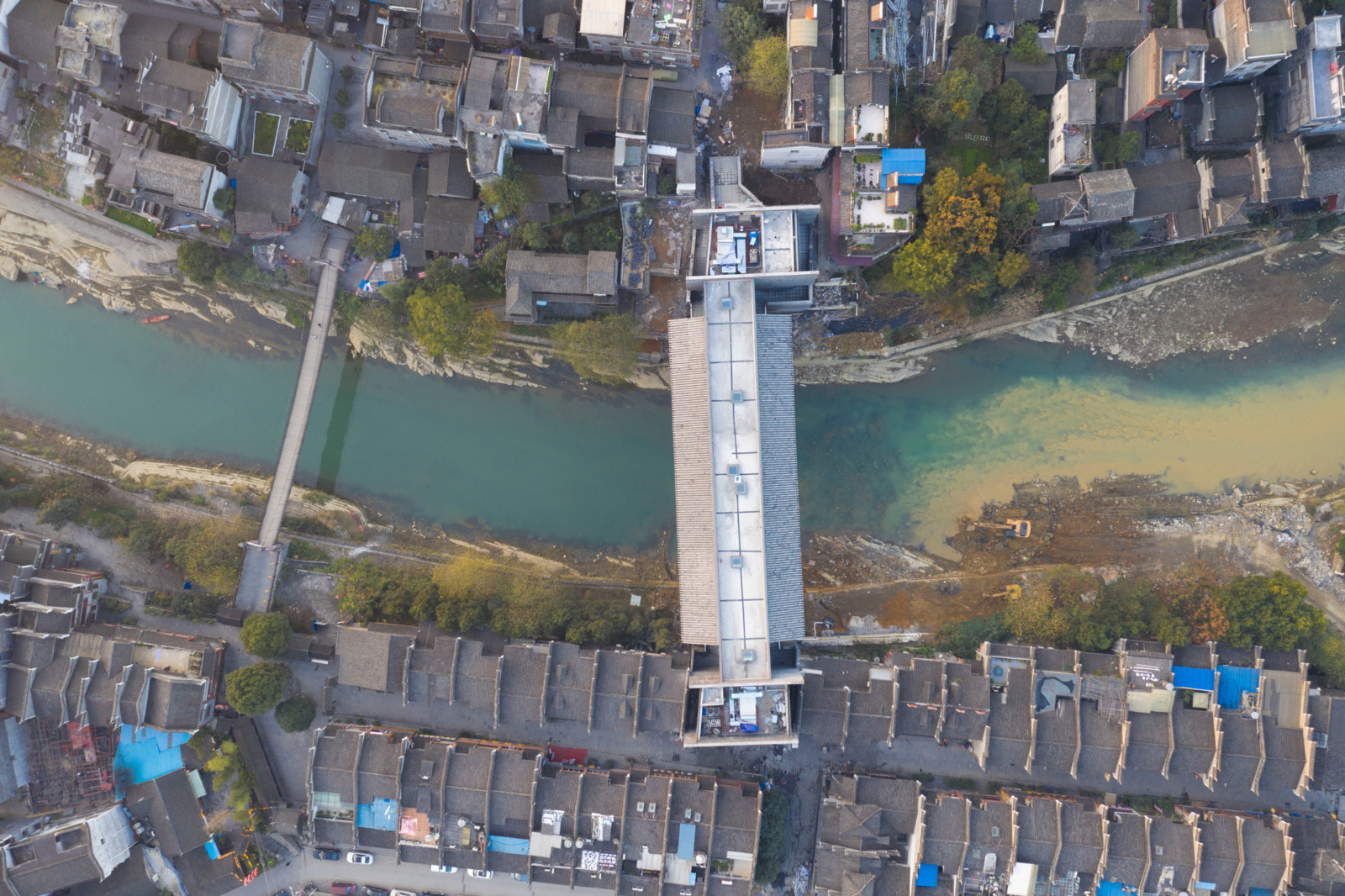
The museum provides a pedestrian route that connects parts of the existing urban fabric and references the region’s traditional covered bridges.
Initially, the municipal government had planned to build a new art museum in a development zone on the outskirts of the city, but Atelier FCJZ proposed situating it more centrally to make it more easily accessible.
博物館提供一條步行路線,將部分現有的城市結構連接起來,並參考該地區的傳統廊橋。
最初,市政府計劃在城市郊區的開發區建立一個新的美術館,但Atelier FCJZ建議將其放置在更中央的位置,以使其更易於使用。
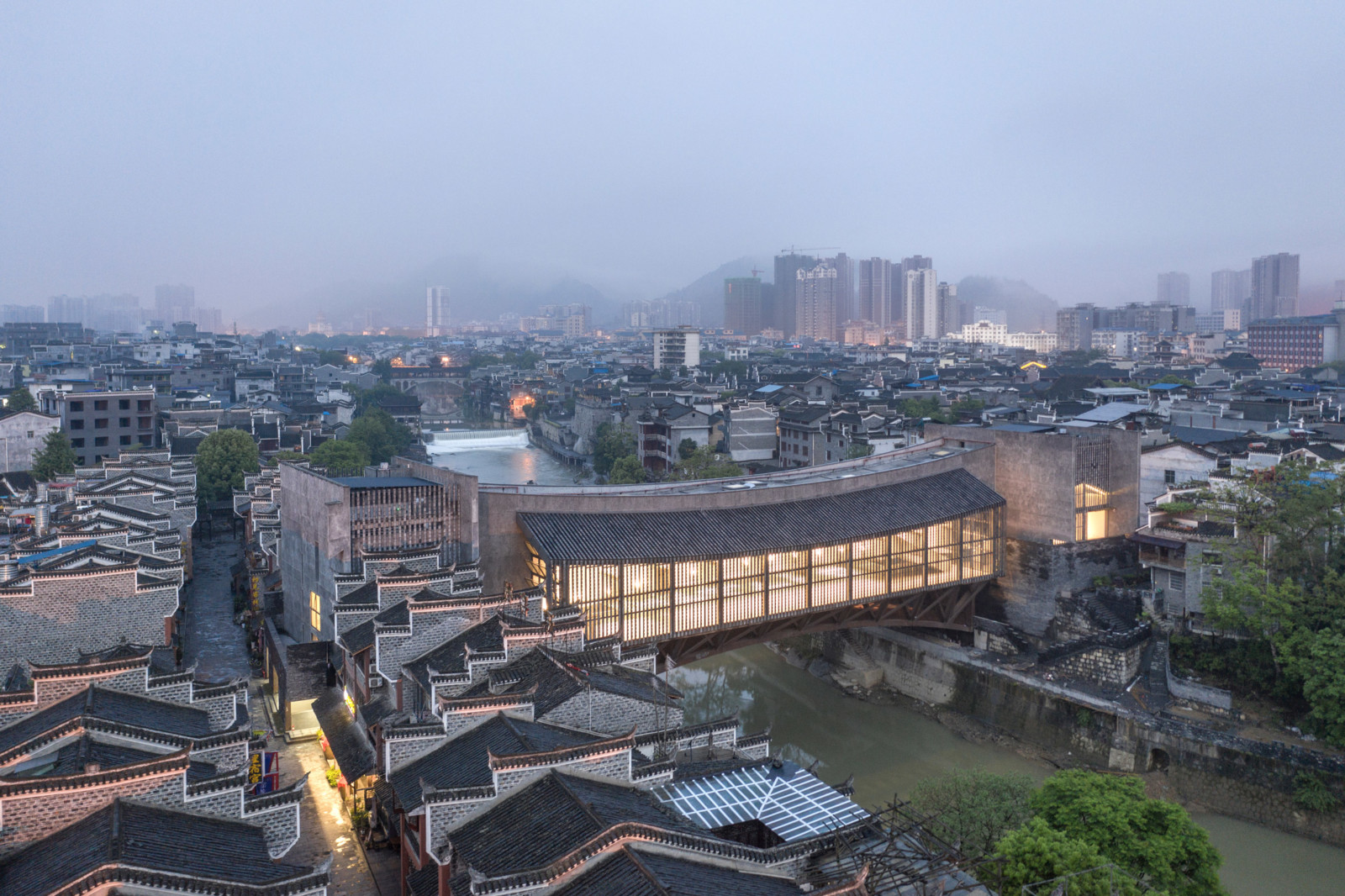
“The river runs through the middle of Jishou, which makes the most central location for the art museum over the water course,” said Atelier FCJZ,
“The art museum then naturally doubles as a pedestrian bridge,” they added. “We hope that people in Jishou would not only make a special trip to see art but will also encounter art on their way to work, to school, or to shop.”
Atelier FCJZ說:“河水流過吉首河中部,這是美術館在水道上最中心的位置,”
他們補充說:“美術館然後自然而然地成為了一座行人天橋。” “我們希望吉首市的人們不僅能專程參觀藝術品,還能在上班,上學或購物時遇到藝術品。”
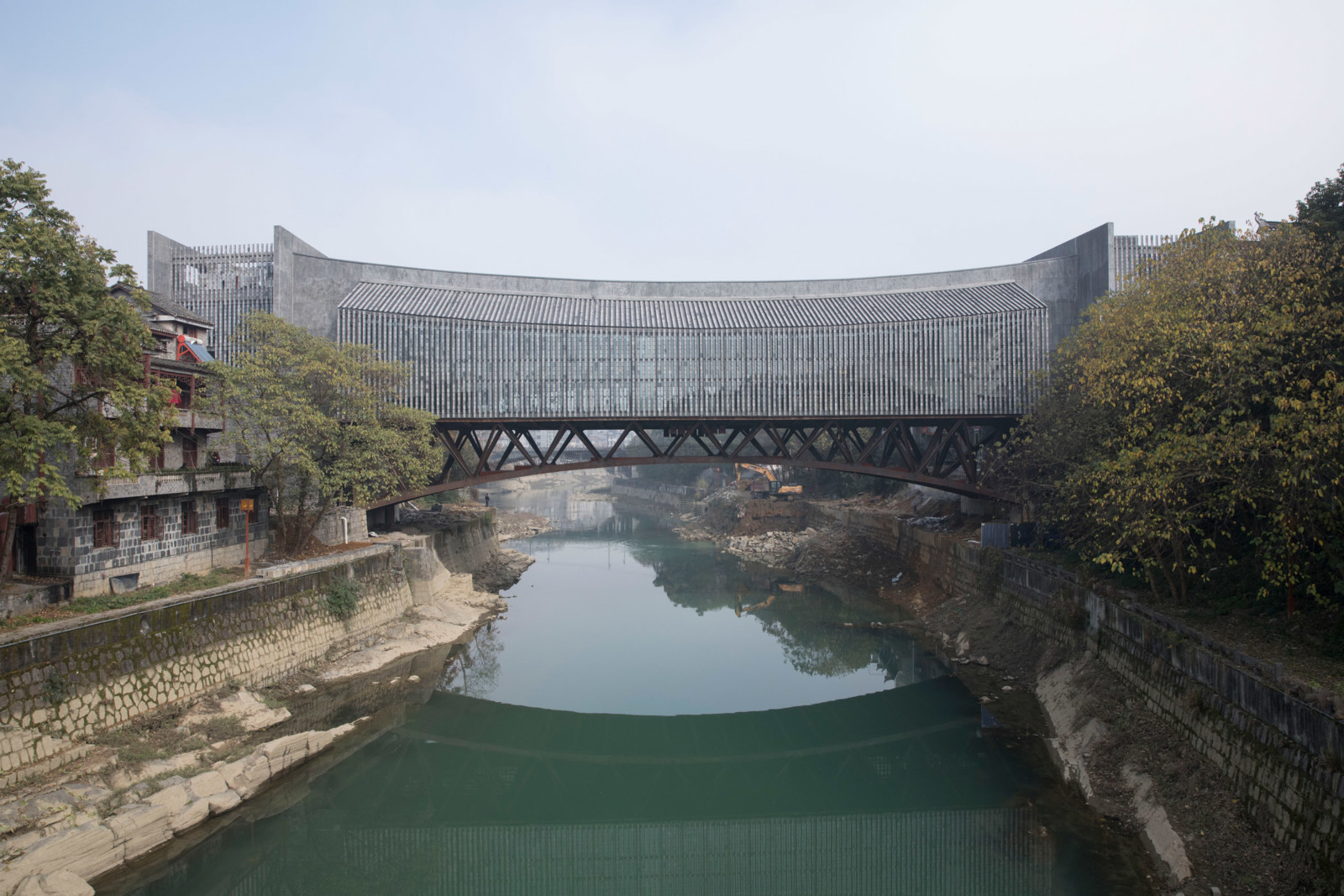
The building comprises two stacked bridges that perform different but complementary functions. The lower level is an open steel truss structure that resembles a covered street.
This bridge features a sloping floor that arcs over the river and incorporates stepped podiums where passers by can stop and rest. An open metal balustrade lining the walkway permits views of the river on either side.
該建築物包括兩個執行不同但互補功能的堆疊橋。 下層是開放式鋼桁架結構,類似於有蓋的街道。
這座橋的傾斜地面在河上成弧形,並設有階梯式裙樓,過路人可在此停下來休息。 人行道襯砌的開放式金屬欄杆可從兩邊欣賞河景。
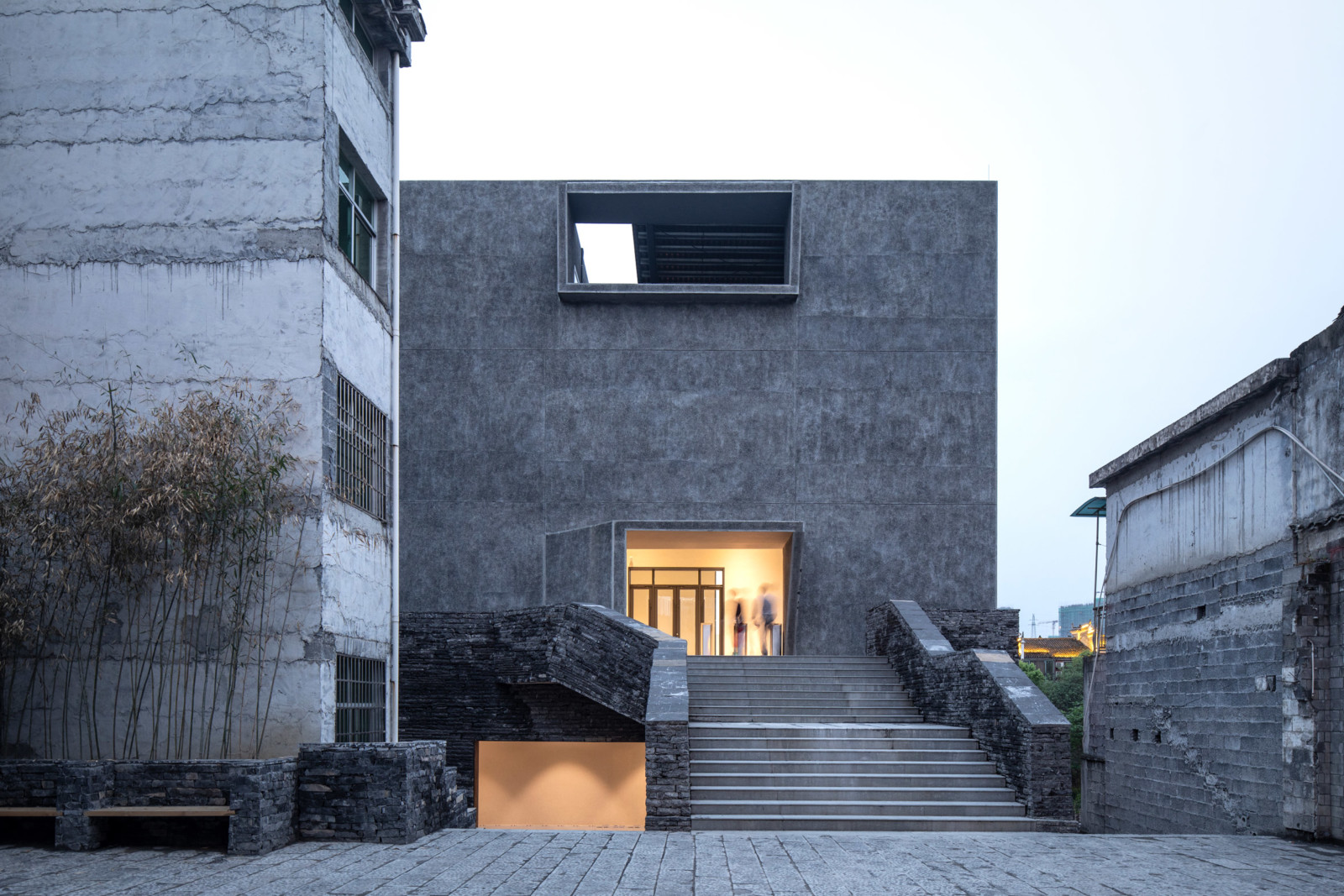
The museum’s painting gallery is accommodated in a concrete arch placed on top of the steel truss. The concrete volume was cast in-situ and also features a floor that arcs gently along its length.
In between the two bridges, glazed walls shaded by vertical ribs covered in tiles enclose a hall for temporary exhibitions. This brightly day-lit space also contains staircases connected to the sides of the painting gallery.
博物館的繪畫畫廊被安置在鋼桁架頂部的混凝土拱門中。 混凝土體積是現場澆鑄的,其地板沿其長度方向呈弧形。
在兩座橋之間,由垂直肋骨遮蓋的玻璃牆圍成一個臨時展覽的大廳。 這個明亮的白天空間還包含連接到繪畫室兩側的樓梯。
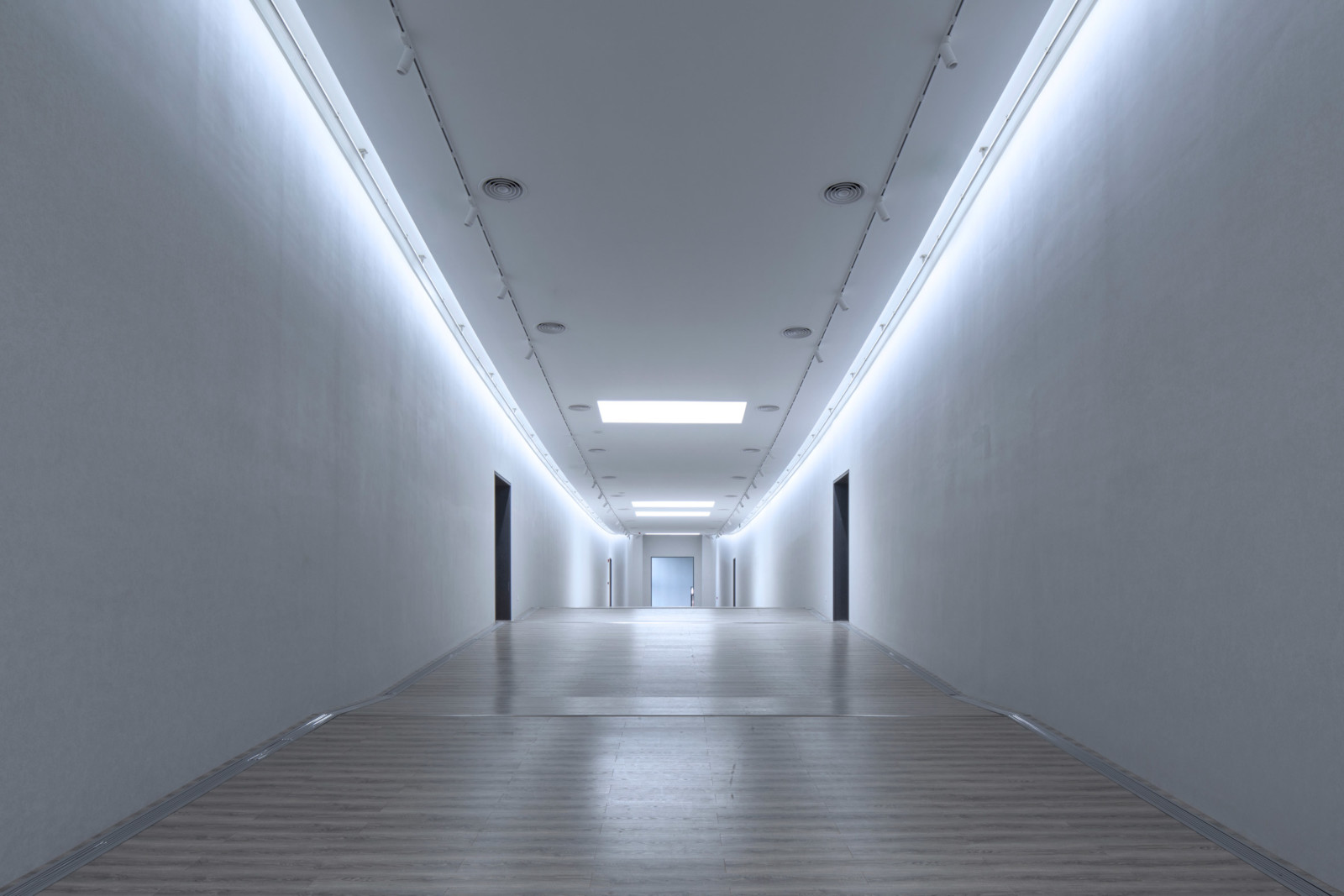
Supplementary spaces including the entrance hall, offices, shop and tearoom are located in the two bridgeheads at either end.
Visitors can enter the upper level from either side of the river and pass through the exhibition hall on their way across.
在兩端的兩個橋頭堡中都設有補充空間,包括入口大廳,辦公室,商店和茶室。
參觀者可以從河的兩邊進入上層,然後穿過展覽館。
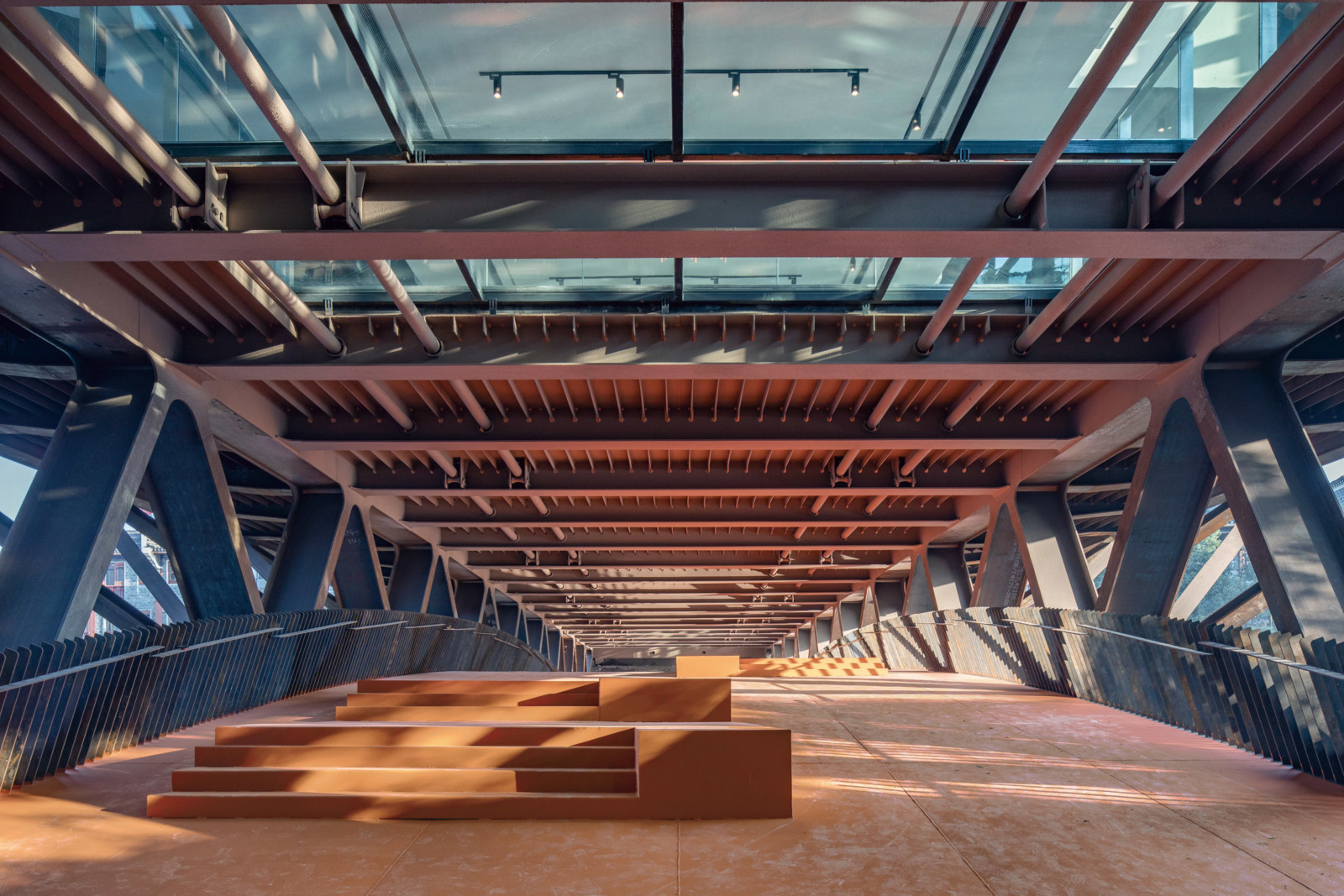
JAM’s goal is to embed culture within the community and to merge with existing terraces housing shops, restaurants and residences. Entrances on both riverbanks are therefore integrated into the mixed-use streetscape.
JAM的目標是將文化融入社區中,並與商店,餐廳和住宅的現有露台合併。 因此,兩個河岸的入口都被整合到混合用途的街景中。
Its design references traditional covered bridges found throughout the mountainous Xiangxi district in western Hunan. These bridges, known as Fengyu Qiao, typically provided a public space where travellers would rest and vendors would set up stands.
其設計參考了遍布湘西湘西山區的傳統有蓋橋樑。 這些被稱為“風雨橋”的橋樑通常提供了一個公共空間,旅客可以在那裡休息,攤販可以設置攤位。
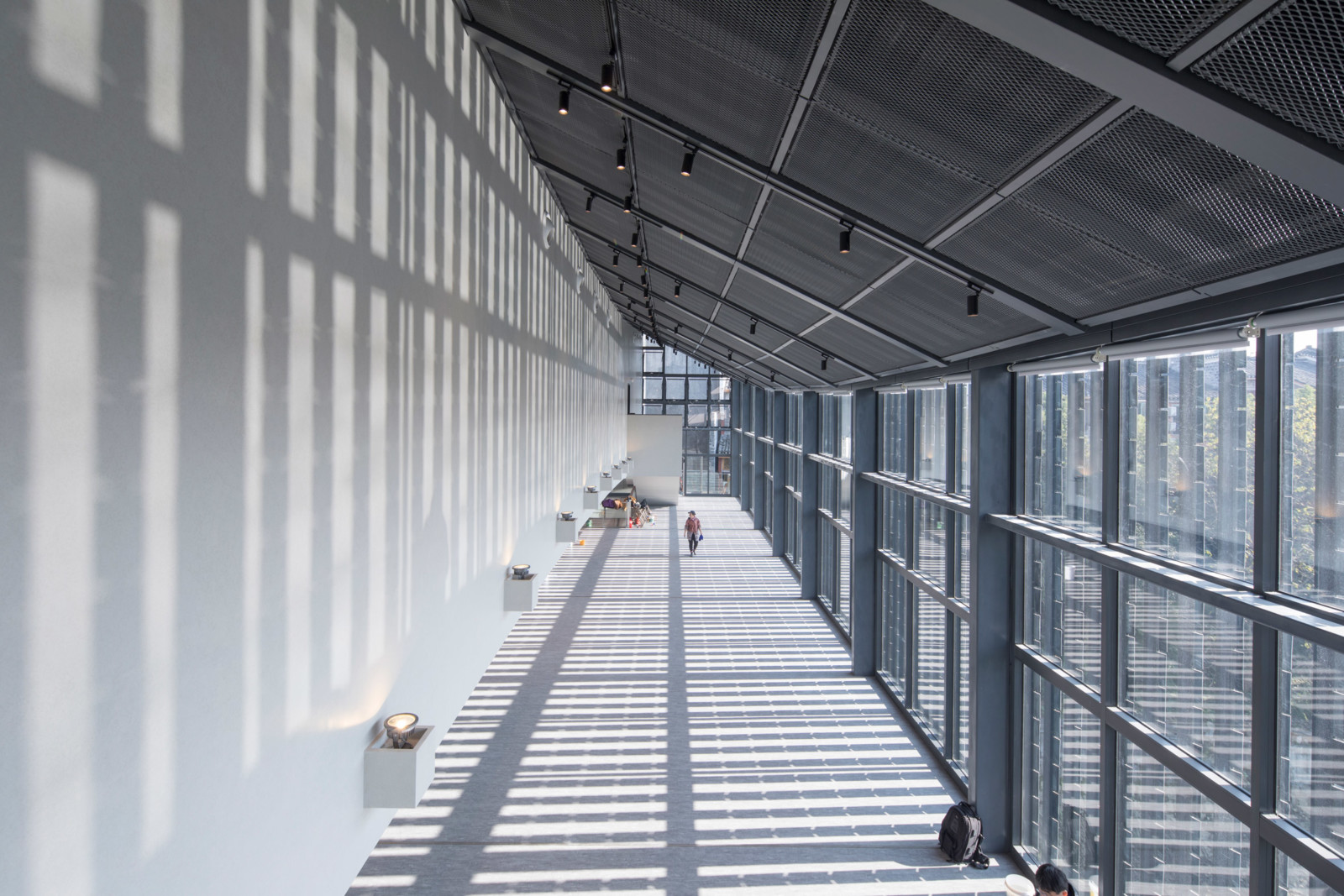
“Our design creates a contemporary interpretation of the age-honoured building type,” the architecture studio said.
“We introduced art as a new programme on a covered bridge while maintaining pedestrian traffic and meanwhile translating the formal language of the Fengyu Qiao into a modern one.”
建築工作室說:“我們的設計創造了對古老建築類型的現代詮釋。”
“我們將藝術作為一項新計劃引入了有遮蓋的橋樑,同時保持了行人通行,同時將風雨橋的正式語言轉化為現代語言。”
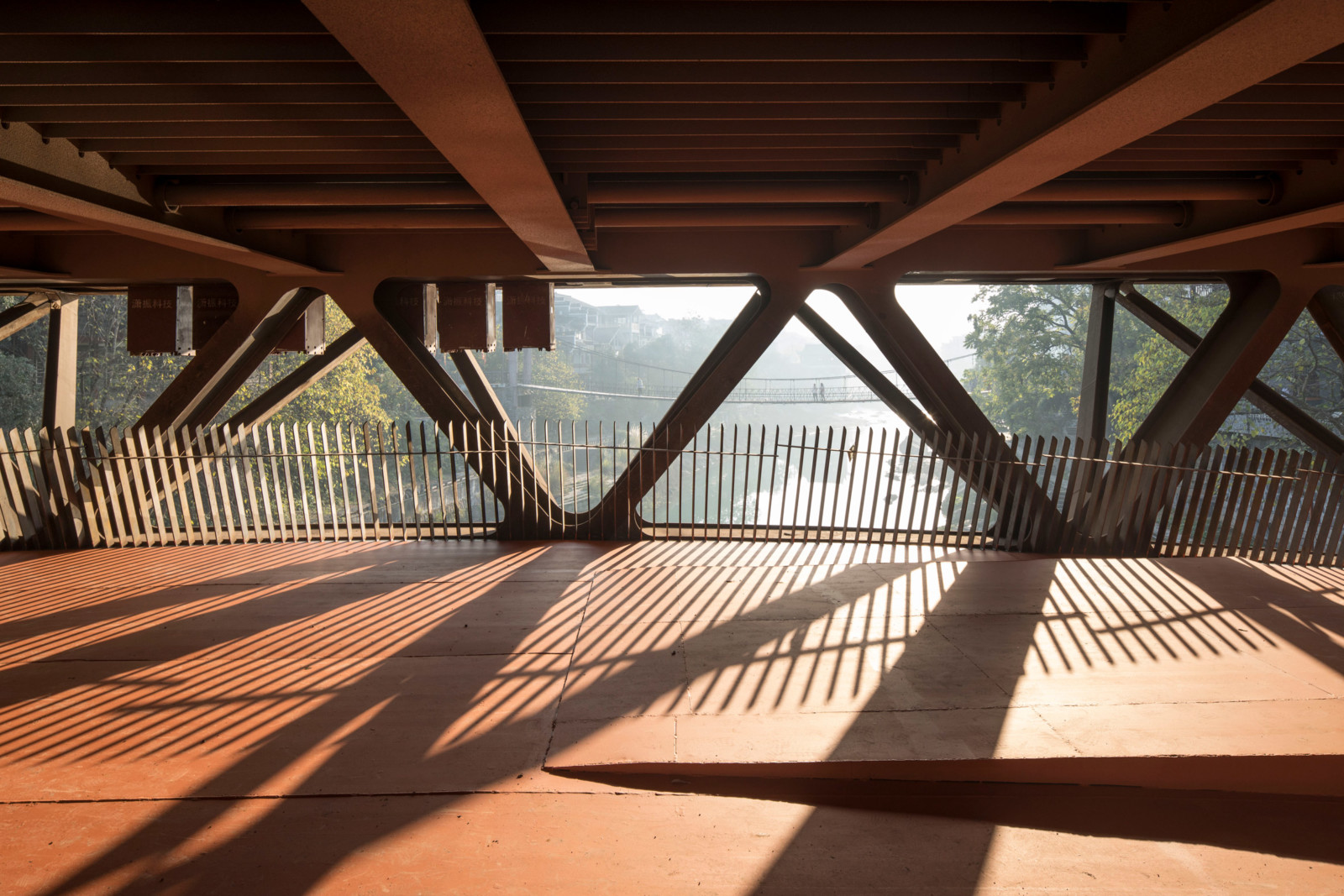
Atelier FCJZ was established by Yung Ho Chang and Lijia Lu in 1993.
The Beijing-based firm’s previous projects include a windowless house with glass floors and a restaurant featuring a ceiling made from a woven net of bamboo.
FCJZ工作室由張永和和李佳路於1993年創立。
這家總部位於北京的公司以前的項目包括一間無窗玻璃房,玻璃地板,以及一間餐廳,餐廳的天花板由竹製編織網製成。
Project credits:
Architects: Atelier FCJZ
Principal architects: Yung Ho Chang, Lijia Lu
Project team: Liang Xiaoning, Yang Pu, Liu Kunpeng, Su Siqi, Rao Gang
Structural design consultant: Chang Qiang
項目學分:
建築師:Atelier FCJZ
首席建築師:張永和,盧麗佳
項目團隊:梁曉寧,楊璞,劉坤鵬,蘇思奇,饒剛
結構設計顧問:常強
FROM:https://www.dezeen.com/2019/05/27/jishou-art-museum-atelier-fcjzs-bridge-china/

